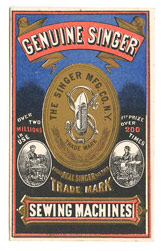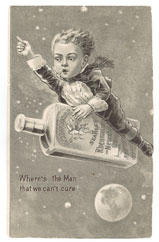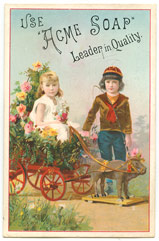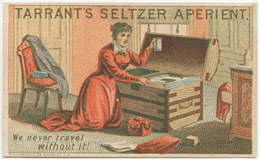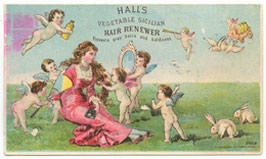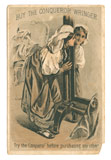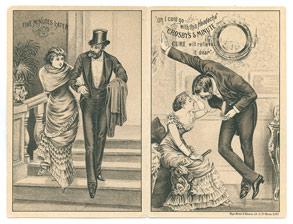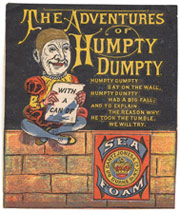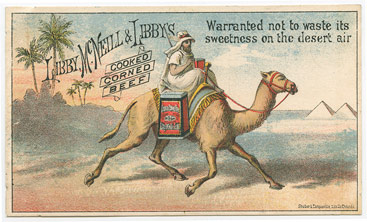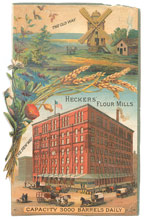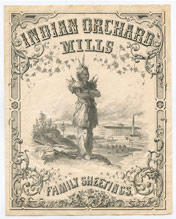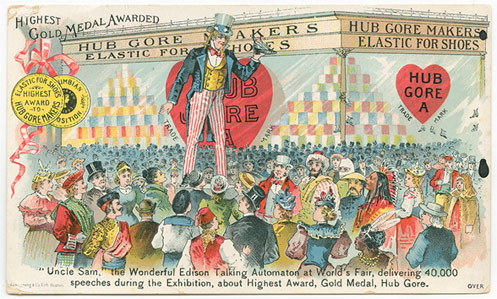The Art of American Advertising:
Brand Name Management
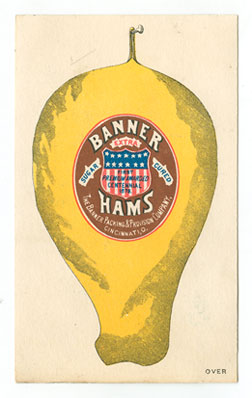
“Today [advertisements] are issued by the manufacturers of a particular article or special kind of articles . . . [that] may be obtained ‘anywhere,’ and the only request made is that the name of the brand be not forgotten. ”Frederick Dwight, “The Significance of Advertising,” Yale Review, 190941

In a 1901 article in The Atlantic Monthly, Walter D. Scott, a pioneer in applied psychology, wrote, “To advertise wisely the business man must understand the workings of the minds of his customers, and must know how to influence them effectively,—he must know how to apply psychology to advertising.”42 Indeed, with increasing sophistication businesses began to employ a number of marketing conventions that not only communicated general information about a product, but also persuaded consumers of the worth of one product over another. By 1868, the Steinway Company was allocating more than $50,000 toward advertising with the aim of linking the Steinway name with a widely esteemed product. Companies “experimented with national marketing strategies that would turn those products into profits as quickly as possible,” historian Susan Strasser contends. “They examined each other’s successes and failures and, in consort with an emerging advertising profession, began to articulate principles and design marketing programs.”43
With so many similar goods flooding the market, one key to successful advertising was differentiating products from one another with the repeated printing of brand names and trademarks. “Such world-wide characters as ‘The old Quaker of Quaker Oats . . . and the Victor Talking Machine Dog’ would never have been worth the millions of dollars at which their owners prize them,” copy writer G. H. E. Hawkins explained, “but for the fact that they have been ding-donged into the public day after day and month after month and year after year.”44
Brand names and trademarks appeared in advertising media, and on packaging, labels, and the product itself. Through their distinctive emblems, trademarks helped to establish a graphic association with goods. Symbols, such as a sword or an angel, were designed to promote a sense of assurance regarding the quality of a product. Trademarks became valuable legal properties, and the number of registered trademarks rose from a handful in 1870 to over 50,000 by the 1920s.45 Some companies patented the shape of their product containers, as Heinz did with its original glass ketchup bottle, to ensure that no other product usurped its unique form. Strasser asserts, “Successful brands were central to marketing schemes that built powerful companies,” and in fact, many nineteenth-century brand names, such as Kodak, Singer, Campbell’s, and Wrigley’s, still survive today.46
Easy-to-read and remember slogans, such as “A Leader in Quality,” or “Where’s the Man We Can’t Cure,” paired with brand names functioned as pervasive reminders of a product’s reliability and value. Advertising professionals carefully crafted their copy. Nathaniel Fowler advised in his 1897 publicity manual. “There are some advertising lines, old as they may be, that will always live. . . . As the shortest distance between two geographical points is the straight line, so the shortest words and the plainest words bridge the distance between the eye and the understanding in the least time.”47
Combative discourse, the mainstay of political cartoons throughout the nineteenth century, also served as a compelling means of convincing customers of the superiority of one product over another, and a number of printers who created political cartoons made advertising images as well.48 Especially fierce competition existed among makers of soap, patented medicines, and sewing machines. Testimonials in trade cards, brochures, and souvenir publications included a P. T. Barnum-like chorus of claim-making comparisons, before-and-after scenarios, exaggerations, and even warnings about patent infringement to customers contemplating the purchase of a competitor’s product.49
Advertisers used common visual themes to capture audience attention. Trade cards, posters, souvenir publications, and novelty items featured appealing romantic imagery—women, children, animals, flowers, and pastoral scenes. Other themes included references to popular literary subjects, the exotic, and racial and ethnic stereotypes. Illustrations that positioned products alongside views of factories where they were manufactured linked consumer goods to the glorification of modern industrial life. “The frequent depiction of majestic factories on trade cards is simply further proof of the obvious confidence and optimism with which nineteenth-century Americans looked upon the industrial revolution taking place around them,” Jay contends.50 Patriotic subjects (frequently seen on clipper ship trade cards) featured images of the American eagle and Uncle Sam; the latter often played the part of the highly energetic American salesman. “The graphic flexibility of lithography offered advertisers an infinite range of colorful images that could use humor, sentimentality, lust, and other appeals that were more evocative than the wordy claims typical of contemporary newspapers and magazine ads,” Laird argues.51
41 Frederick Dwight, “The Significance of Advertising,” Yale Review. o.s. 18 (August 1909): 199.
42 Walter D. Scott, “The Psychology of Advertising,” The Atlantic Monthly, Vol. 93, no. 555, 1904, p. 36.
43 Strasser, p. 8.
44 Hawkins, p. 14.
45 James D. Norris, Advertising and the Transformation of American Society, 1865–1920. Westport, CT: Greenwood Press, 1990, p. 19.
46 Strasser, p. 52.
47 Fowler’s Publicity Encyclopedia, Volume III, “Common Phrases,” Chapter XXV.
48 Laird, p. 59.
49 With no restraints, advertisers, especially those for patented medicines, were free to make exaggerated claims. In 1892, the Ladies Home Journal refused to include medical advertising because of abuses and frauds in the industry.
50 Jay, pp. 78-79.
51 Laird, pp. 76-77.
